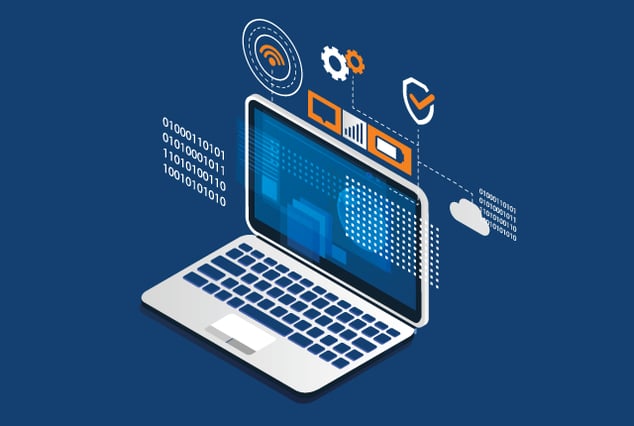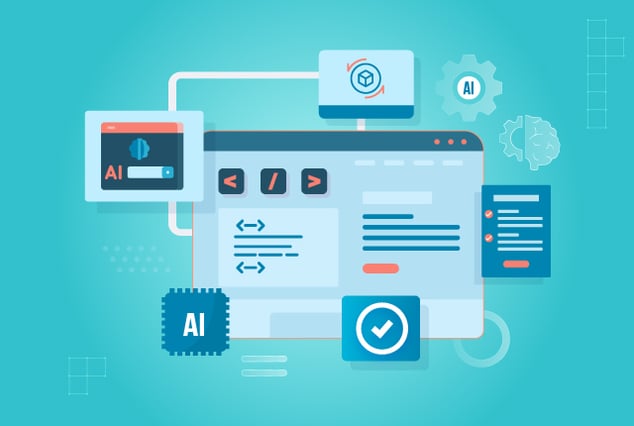
In recent years, conventional SaaS models have evolved into sophisticated service-oriented platforms geared toward enhancing business efficiencies and capabilities between the company and its suppliers, clients, and business partners. Artificial intelligence has become an integral part of SaaS 2.0, as AI-based SaaS integrations allow businesses to cater to their customers’ needs in DTC, B2C, and B2B markets.
But that’s not the only thing, as the benefits of integrating AI in SaaS go far beyond optimizing business processes. The integration of artificial intelligence and machine learning into cloud services has greatly helped to improve product quality and end-user experience, automate repetitive tasks, and support human capabilities, especially with the automation of customer services.
To put it in simple words, by using AI, SaaS companies can achieve the following three cornerstones: personalization, security, and speed.
-
Personalization
AI-powered SaaS solutions combined with natural language processing software can be deployed to automatically process human speech patterns and voice controls to improve customization and customer service functions for better end-user satisfaction.
-
Security
AI and machine learning software can recognize patterns. This greatly helps to enhance the security of SaaS platforms as potential threats are easily identified, and the software can get rid of these threats with the built-in self-recovery system.
-
Speed
AI-enabled SaaS platforms help organizations obtain data quickly to make the right decisions and forecasts, and increase their responsiveness to customers.
How Can SAAS Platforms Use AI and Machine Learning?
AI and machine learning in SaaS can help businesses improve customer experience, internal collaboration, and revenue. Machine learning can help to predict customer behavior patterns and auto-segment them according to their preferences. Let’s take a deep dive into the different ways in which SaaS platforms can benefit from using AI and machine learning:
-
Personalization
In SaaS, natural language processing and the ability of AI to learn from users’ previous interactions can help configure user interfaces so that they cater to the individual’s particular needs and preferences.
-
Predictive Analytics
There are many ways in which AI, when integrated into SaaS solutions, can leverage predictive analytics to create a better user experience. For example, machine learning can assist in making predictions about which users will be interested in your service and what features they will require the most. Any business that wants to increase its customer base, improve customer engagement, and decrease disengagement must use these capabilities of AI and ML.
-
Product Search
User behavior data sheds light on the buyer’s journey from a query to product page view, all the way to the purchase event. Through large-scale data analysis of query logs, we can create graphs between queries and products, and between different products for upselling and cross-selling them across accounts.
-
Release Management
Artificial intelligence is a game-changer for SaaS developers because it can augment their own coding abilities by providing the necessary checks to ensure that the quality of the code is good. Deployment can be reduced from months to days when AI is used to verify the quality of the code and the overall scalability of the product.
-
Enhanced Security
AI ensures that all databases of SaaS products are effectively secured against cyberattacks and that they can learn from new security threats automatically. As the number of users has grown, so has the volume of data and the possibility of threats. AI helps to mine the data and improve its overall quality by unmasking any kind of duplicate data fields.
Benefits of Integrating AI in SAAS
Businesses are currently paying close attention to SaaS and AI integration. With AI integration, SaaS offers quicker software deployment than on-premise software, making it the center of recurring revenue models for software developers. Below are some of the benefits of integrating AI into SaaS platforms:
-
Automation Negates the Need for Tedious Manual Jobs
AI-based chatbots, which are programmed to answer and resolve the user's queries automatically, have greatly reduced the dependence of enterprises on the manual efforts of employees to answer customer/prospect queries. These chatbots have helped companies to reduce costs, and improve the overall website experience. By coordinating an AI-controlled chatbot, SaaS organizations can answer clients quickly, resolve repeat questions, and even offer help in various dialects.
-
Cost Saving
The implementation of AI to automate business processes like marketing, sales, and customer success not only helps to improve the overall buyer’s journey and customer experience but also helps companies reduce costs. Although the adoption of AI is still in its early stages, it will eventually become a standard in many different businesses.
-
Augments Efforts for Human Welfare
The integration of artificial intelligence into SaaS platforms has helped different industry verticals to improve their offerings. Let's take a deep dive to understand this further:
-
Alerts for Natural Calamities
AI applications accurately predict natural calamities, helping scientists and governments send out timely warnings, thereby saving lives.
-
Detection of Malicious Activities
Securing the client/customer’s data is an integral part of the business for cloud service vendors. AI technology can effectively identify the possibility of a cyber threat, and send out timely notifications to IT professionals to secure the data and personal information.
-
Helping Tourism & Travel Agencies
It offers user-friendly recommendations for travelers around the world. AI helps travel agents accurately map out hotels and travel routes per the client's requirements. This greatly helps to reduce manual search time and improve the overall experience.
-
R&D (Research & Development) in Healthcare Industry
The pharmaceutical industry is incorporating AI to discover and develop new drugs and clinical trials to come up with groundbreaking medical treatments. Apart from this, AI has also helped in the development of telehealth services that allow patients to opt for virtual meetings with their doctors from the comforts of their homes.
-
Role of Quality Assurance in SaaS
As the number of users using mobile and website applications increases, companies are adding new functionalities to improve the overall experience. In such cases, regular testing becomes necessary to maintain quality. The QA team runs a gamut of tests to check every aspect of the software before delivering it to the end user. Typically, these tests include the following:
-
Regression Testing
SaaS companies add new functionalities to apps from time to time. Regression testing is essential to ensure that new features are not affecting the overall functionality. It is critical to ensure that any recent changes to the product have not affected the existing functionality. Regression testing for SaaS applications can be extremely extensive and entail a variety of test cases that encompass different testing categories.
-
Cross-browser Testing
Every client uses a different browser as per convenience. Here cross-browser testing plays an important role to check if the SaaS app is working as expected and if its functionality is compatible with different browsers.
-
Load Testing
Testers add a huge volume of data at a time to an app to check its efficiency and functionality under huge data loads to identify the exact breaking point. While SaaS-based products can be affected by other users, on-premises applications are focused on the end user's environment. As a result, performance audits must be performed, including stress and load tests. These tests are carried out by QA specialists to determine the maximum capacities of software and gauge its performance under the stress of an anticipated number of concurrent users.
-
Security Testing
When it comes to data security, it becomes an extremely sensitive topic. A breach of customers’ data can ruin the company’s reputation. So, the testers check the app's security level to ensure that products can support highly sensitive data, and have a self-destructive mechanism in place in case of a breach. These applications require thorough access control validation because they support multiple roles and accounts within an organization. Penetration testing is carried out by QA engineers to identify any weaknesses and guard against data breaches.
-
Functional Testing
QA engineers check the software in relation to the functional requirements by examining every level of interaction between all product components, such as units, their integration, and system testing. The testing becomes more thorough when different configurations are tested.
Conclusion
With the integration of AI, organizations can be more productive in high-volume manual operations while remaining attentive to the individual preferences of the customers. Artificial intelligence must therefore have a place in a tech stack for businesses that want to evolve quickly and stay ahead of their competition. So what do you do next in order to implement AI in your tech stack? You can partner with an experienced AI testing service provider like QASource, where our teams have extensive experience in testing the quality of your AI. Contact QASource right away to learn more about our AI testing services.


